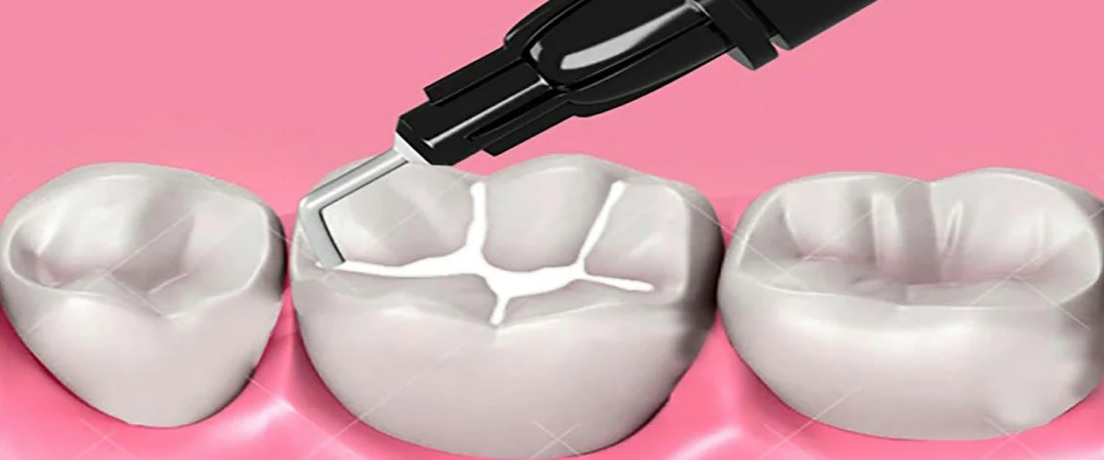Dental Fissure Sealants Treatment & Application - Istanbul Turkey Dental Clinic
Fissure sealants are resin materials that adhere to teeth, preventing cariogenic bacteria from affecting them. Pits and fissures are prone to decay. Protection against this is carried out by fissure sealants.
The purpose of fissure sealants is to fill the pits and fissures with a special material to make them smoother, making brushing and cleaning easier. This process is painless and doesn’t require anesthesia.
Fissure sealants that last for many years are available. It is recommended to apply sealants to each erupted molar tooth during regular check-ups. If they fall out or break, they should be replaced.

What Is a Fissure Sealant?
Fissure sealants are materials that adhere to teeth, preventing cariogenic bacteria from affecting them. The pits and fissures in teeth are prone to decay. There are different materials used as fissure sealants, with the most advanced ones being bis-GMA polymers.
Other fissure sealant materials include:
- Ormosers
- Resin-based sealants
- Glass ionomer cements
- Hybrid materials
- Amorphous calcium phosphate (ACP)
There are many more fissure sealant options available. The important thing is that the fissure sealant material should be suitable for the tooth structure and have the required properties. These properties include:
- Low solubility
- Resistance to the oral environment
- Biocompatibility
- Ability to penetrate even narrow fissures
- Similar to enamel
- Caries prevention effect
How to Apply a Crack Filler?
From a dental health perspective, there are multiple indications for the use of fissure sealants. The most suitable ages for applying fissure sealants are:
- At the age of 3-4: First primary molars
- At the age of 6-7: First permanent molars
- At the age of 10-11: Premolar teeth
- At the age of 12-13: Second permanent molars
Fissure sealant application involves several steps:
- Cleaning the tooth surface
- Isolation
- Acid etching
- Rinsing and drying
- Applying the sealant
- Polymerization (hardening)
- Checking the sealant
When these steps are completed, the preventive dental health application is finished. In some cases, the sealant material can come off. The patient may not notice it, but it will be revealed during a check-up with the dentist. In this case, the dentist will replace the sealant. It’s essential to continue regular check-ups according to the specified time intervals.
- Tooth contamination with saliva
- Inadequate acid etching time
- Poor surface cleaning
- Insufficient rinsing after acid etching
- Inadequate light and duration during polymerization
How Is Tooth Decay Detected?
Tooth decay is one of the most common oral and dental health issues. The formation of tooth decay is caused by harmful bacteria in the mouth. The oral cavity naturally harbors bacteria, but there are bacteria that can harm tooth structure. These bacteria, particularly, feed on sugar. Therefore, it is important to maintain oral hygiene after consuming sugary foods. Otherwise, the nourished harmful bacteria begin to produce acids that damage the tooth enamel. This is where tooth decay becomes a concern.
What Should Be Considered Before and After the Procedure?
After the application of fissure sealants on teeth, there are certain points to be taken into consideration. Applying sealants does not imply that teeth will never decay. After the procedure, it is essential to maintain oral and dental hygiene. Practices such as brushing, rinsing, and flossing should be diligently observed.
Sometimes, the filling materials used may come loose. The individual may not notice this, but it becomes evident during a dental check-up. In this context, the filling is replaced by the dentist. Post-procedure follow-up appointments should be adhered to according to the specified intervals.

